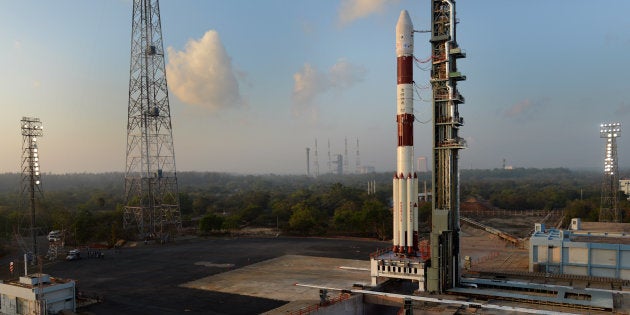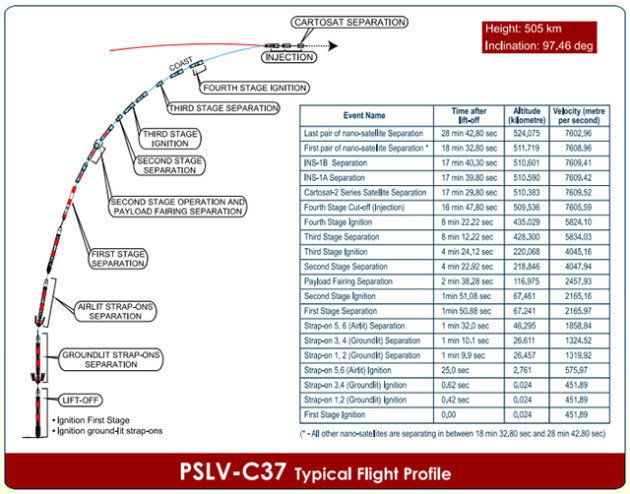
ISRO today launched a record 104 satellites with the help of PSLV C37 Rocket. The launch took place at Sriharikota High Altitude Center (SARC) at Satish Dhawan Space Center in Andhra Pradesh at 9:28 am. Here are all the details of the tech and numbers behind the record-breaking launch.
The rocket that carried the satellites:
PSLV C37 is the 39th flight of the Polar Satellite Launch Vehicle (PSLV) series of rockets by the Indian space agency. This was the 16th flight in the XL configuration which involves solid strap-on motors for the better capacity.
How much payload (weight of the satellites) was the rocket carrying?
The primary satellite Cartosat 2 series weighs 714 kg while the other 103 satellites combine weighs 664 kg. So the total payload was 1378 kg.
What are the previous records of the satellite launches?
The Russian space agency held the record of deploying 33 satellites during its Dnepr Cluster Mission in 2014. From the US Orbital space agency launched 29 satellites in 2013 using a Minotaur-1 rocket from NASA's premises.
What countries are the satellites from on PSLV C37?
There are a total of 6 countries whose satellites are participating in the launch. India has three satellites, the Cartosat 2 series, which are the primary satellites. The other two are INS-1A and INS-1B.
There are 96 satellites from the US. Amongst which 88 are from Dove Satellites and the remaining 8 are from LEMUR satellites. The other payloads are BGUsat from Israel, Al-Farabi-1 from Kazakhstan, PEASSS from the Netherlands and Nayif-1 from UAE.
What was the flight plan?
The flight of the PSLV rocket lasted around 16 minutes. The satellites were to be launched at a sun synchronous height of 505 km.

What is the function of the primary satellite Cartosat 2 series?
This is the fifth satellite in the Cartosat 2 series. The previous ones have been Cartosat 2, 2A, 2B and 2C. Notably, Cartosat 2C provided crucial intelligence data for India's surgical strike last year. The new satellite will run with the help of solar arrays generating 986 watts and two Li-Ion batteries for backup power. It will be used for imaging primarily.
The design, which should last five years, will provide support for cartographic applications, coastal land usage and regulation, road and water network monitoring, the creation of land use maps, and various other Land Information System (LIS) and Geographical Information System (GIS) including defence intelligence.
@